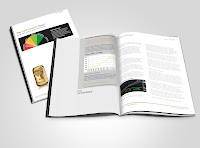Internet
companies are very difficult to value, particularly when so much emphasis is
put on growth over revenue. Companies like YouTube and Bebo were not acquired
based on how much money they were bringing in, but on the numbers of visitors
who were coming to the sites, and the growth they were seeing month over month,
year over year.
Speak
to an M&A executive at one of the big tech companies and you’d be forgiven
for thinking they lived in an alternative universe. Rarely will you hear them
talking about price-to-earnings ratios or even revenue. They value companies
based on eyeballs and email list sizes because they believe that it’s people
that are the currency on the web.
This
type of thinking is not without its strong public critics. In fact, it’s rare
to go even a month without someone decrying the crazy valuations that giants
like Microsoft, Google and Yahoo help to support. Recently, Yahoo bought Tumblr
for over $1 billion when the company had made only $12 million in the prior
year, and this was met with loud derision in some sections of the media.
Image
source: http://cdn.timesofisrael.com/uploads/2013/05/Yahoo-Tumblr_Horo-e1369114256146.jpg
This
was best summed up Colin Gillis, a BGC financial analyst who spoke to the BBC about the deal. "Even if revenue was $100
million, it means Yahoo paid 10 times revenue," he said. "Ten times
is what you pay to date the belle of the ball. It's on the outer bands of
M&A."
While
this type of thinking may appear reasonable, it would have led Gillis to ignore
the likes of YouTube, which went on to be the most successful acquisition in
Google’s history. People mocked Google for buying it for around $1.5 billion,
but now most serious estimates place the value of YouTube at around $40–$50
billion. The deal makes Google look like a master of corporate strategy against
its stingier, more timid rivals, and it’s deals like these that keep Wall
Street excited about tech industry M&A activity. You can afford to have
five or six MySpace or Bebo-sized flops, and you still cover your costs if you
have one YouTube-sized success.
It
is well known that Yahoo tried to buy Facebook much earlier in the company’s
life. The company offered around $1bn but then lowered its offer to around $850
million after a bad quarter. After the offer was lowered, the Facebook board
was quick to walk away from the deal. Had Yahoo held firm and not run scared,
its media narrative would be much different today. Facebook is now worth more
than two Yahoos, and so the decision to lower their $1bn offer may go down as
the worst decision in Yahoo’s corporate history.
Tech
startups must focus on increasing their list size and their user numbers. This involves
a delicate balance of getting more people to visit their website and increasing
the conversion rate among people who eventually come.
One
very important marketing lesson is to invite people to join your email
newsletter early. Investors are increasingly looking at list size as a
valuation metric, and it’s easy to see why. Each time you introduce a new
product, you have a readymade audience. And you have a much better chance of
retaining your customers when you can keep in touch with them on a regular
basis.
Many
tech business models rely on network effects. This is where a service becomes
more useful as more people use it. Think about the telephone: it wouldn’t do
much good if you owned a telephone but you didn’t know anyone else who had one.
In the case of the Internet, imagine you use Facebook and you don’t know anyone
else on the site. This is one of the key reasons why Internet companies don’t
charge for their services early: better to get people using a service, and only
then start making revenue.
Image
source: http://www.wired.com/wiredenterprise/wp-content/uploads//2012/10/tech.jpg
Another
reason is the unique cost base of most Internet companies. They spend a lot of
money on engineers, but engineering costs are very loosely correlated to
visitor numbers. When you have very little marginal cost, you can afford to
grow at very aggressive speeds and to make very little money. Whether you have
ten or ten million visitors, you still need to spend money on building your
website. Private and public investors are prepared to buy into this model, and
it will continue as long as investors continue to believe that this works.
















